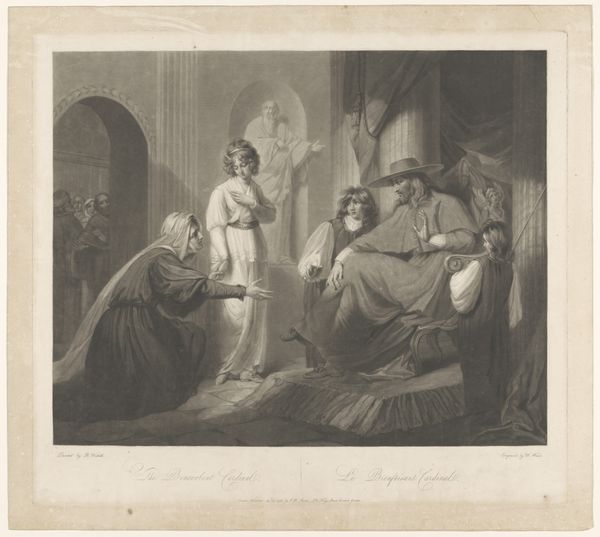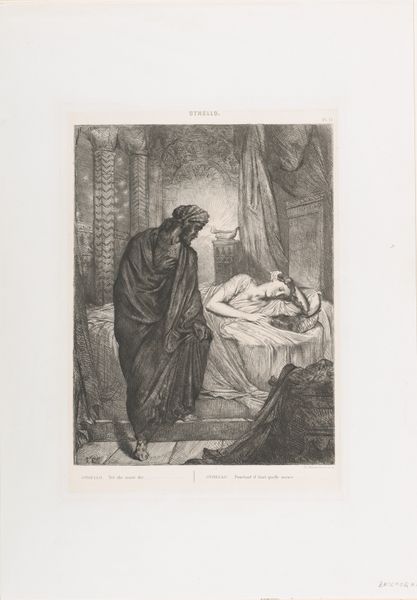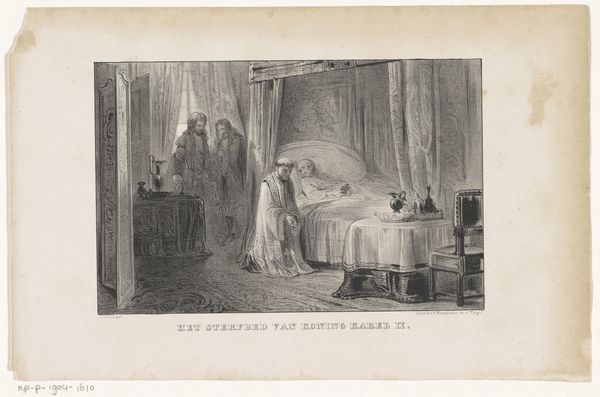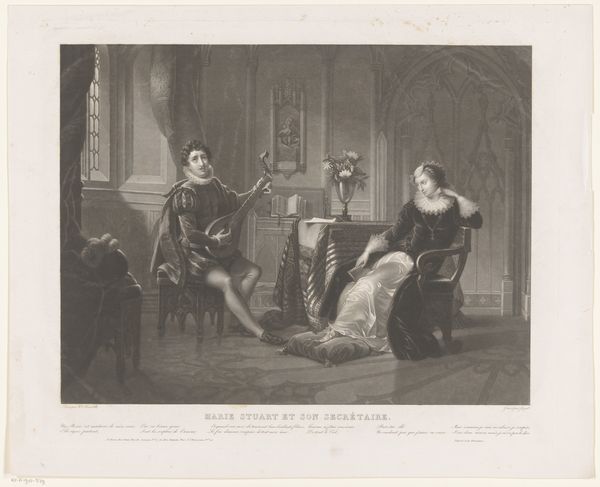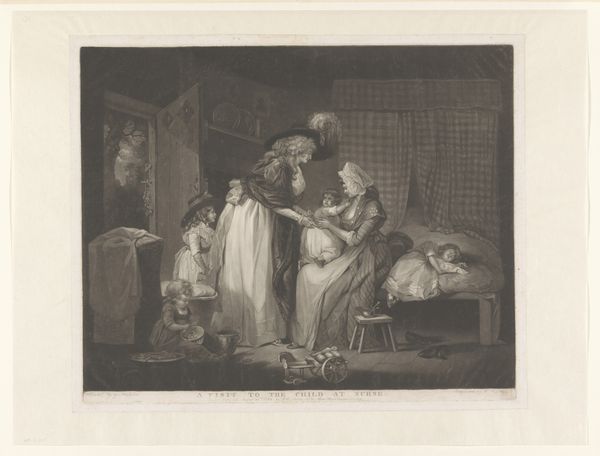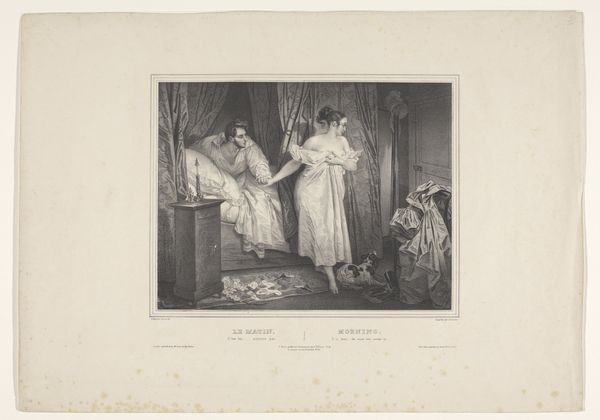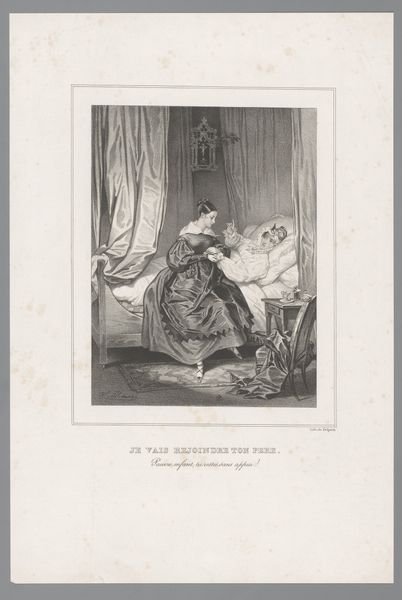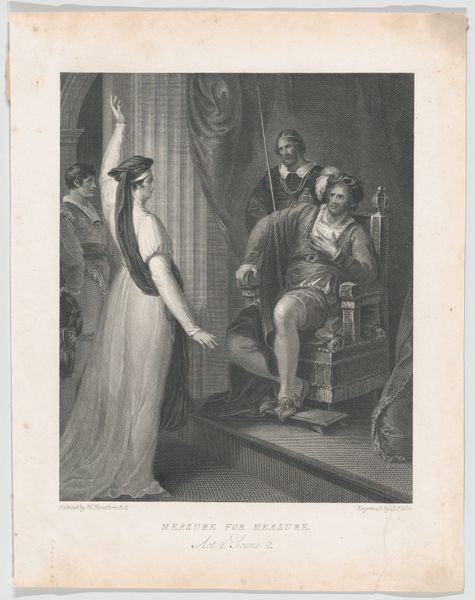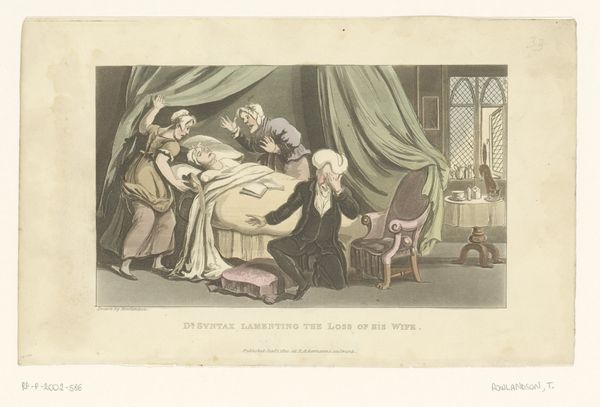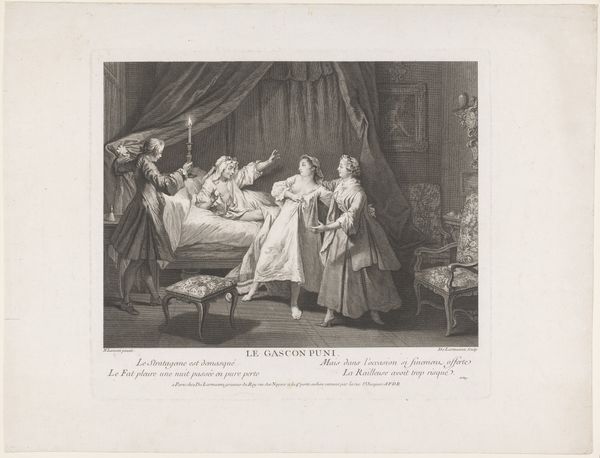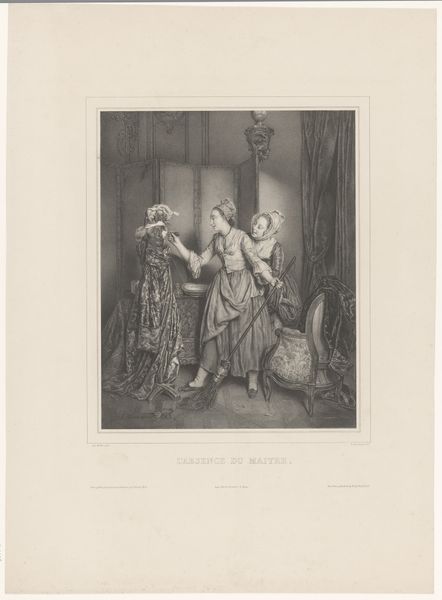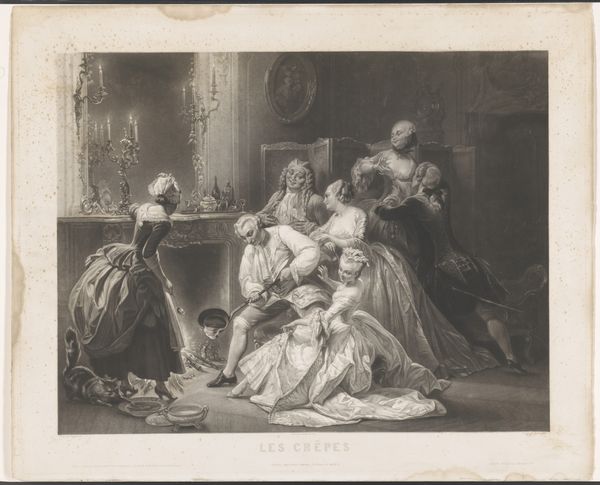
print, engraving
#
portrait
#
print photography
#
medieval
#
narrative-art
# print
#
figuration
#
historical photography
#
romanticism
#
history-painting
#
engraving
Dimensions: height 596 mm, width 643 mm
Copyright: Rijks Museum: Open Domain
Editor: This is "Zonen van Eduard IV opgesloten in de toren" – "The Sons of Edward IV Imprisoned in the Tower," an engraving from somewhere between 1831 and 1853, attributed to Hippolyte Prud'homme. The mood is heavy with sadness. I'm curious about how we should read an engraving like this today. What do you see in this piece from a materialist perspective? Curator: Look closely at the texture, achieved through the meticulous process of engraving. Each line is deliberate, demanding time and skill from the artisan. Consider the economic reality: Who commissioned this work? Was it intended for mass reproduction and distribution, therefore aiming at larger, perhaps less wealthy audiences, shaping a certain view of the captured princes? Editor: So, the act of making the print itself becomes a form of commentary? Curator: Precisely. The material realities and the means of its production reflect the society in which it was made. This wasn't painting, with the individual's 'genius' emphasized. It was a designed object, meant for a function that involves many individuals. Look, also, at what narrative Prud'homme wanted to communicate to this hypothetical audience through this tragic image. Editor: How would this affect the interpretation versus, say, an oil painting of the same scene? Curator: Oil painting was often tied to elite patronage. This engraving, with its accessibility and reproducibility, could serve a different socio-political function, perhaps a wider dissemination of romantic notions of history. What effect might such repeated images have on social conceptions? How does reproducibility of such historicist narrative modify them? Editor: So by considering the medium – engraving – we understand its potential to influence social ideas differently compared to unique, expensive artworks. I guess it goes beyond the scene portrayed to the cultural impact tied to material conditions. Curator: Exactly. It reveals layers of cultural intention. Editor: It has given me a new way of observing narrative!
Comments
No comments
Be the first to comment and join the conversation on the ultimate creative platform.

